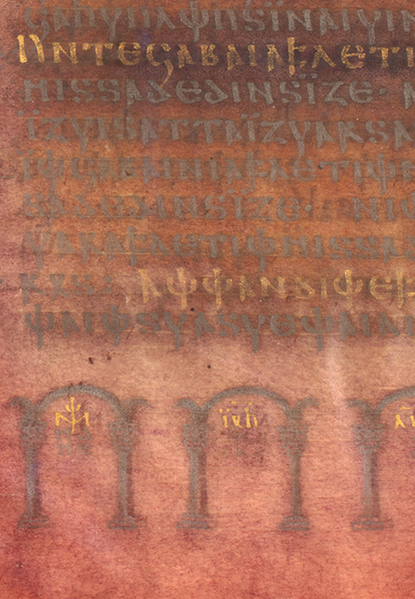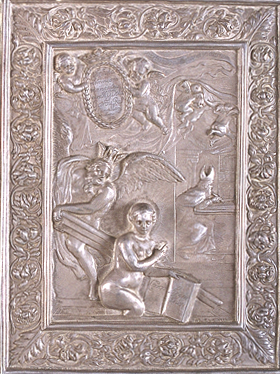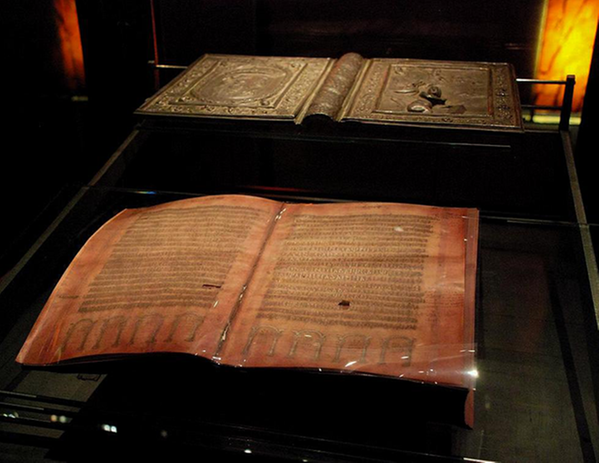The history of Codex argenteus
The Codex argenteus, or the Silver book in Uppsala University Library, is one of the oldest and most extensive examples of the Gothic language today. In Swedish, the book is called Silverbibeln, or the Silver bible.
The four gospels in the Gothic language
The Codex argenteus contains the four gospels written in the Gothic language. The translation from Greek to Gothic was done in the fourth century by the Gothic Bishop Wulfila, who also constructed the Gothic alphabet. The manuscript was probably copied in Ravenna in the period under the Ostrogoths, and possibly for their King Theoderic the Great, at the beginning of the 6th century.
The text of the Codex argenteus is one of the oldest and most extensive examples of the Gothic language of any document surviving today.
Materials
Codex argenteus is written on thin purple coloured vellum of a very high quality in gold and silver ink. The silver script is dominant and has given rise to the term the "silver book", "codex argenteus". It was designed to be a work of magnificence, which is possibly hard to understand today. It probably originally had a splendid binding decorated with pearls and gems.

Details from a page of Codex argenteus.
Codex argenteus' journey
The Codex argenteus was known of in the 16th century when it was in a Benedictine Monastry in Werden in the Ruhr district. By the year 1600 it had passed into the hands of the Holy Roman Emperor Rudolph II and was in Prague when the Swedes stormed the city in 1648. As Swedish war booty it arrived in Stockholm and became part of Queen Christina's library. After the Queen's abdication it passed to one of her librarians, Isaac Vossius, who took it to Holland. From there it was bought by the Chancellor of the Realm (and University Chancellor) Magnus Gabriel De la Gardie, who presented it to Uppsala University in 1669 with a cover in silver. The front of the cover is illustrated by David Klöcker Ehrenstrahl.
The Codex argenteus originally had at least 336 leaves. Of these 187 are in Uppsala. Another leaf has survived for posterity and is in Speyer in Germany. It was discovered sensationally in 1970 in Speyer Cathedral together with some hidden relics. This leaf appears to have travelled a somewhat different path than the others before it came to light again.

Magnus Gabriel De la Gardie's silver cover.
Stolen parts
In 1995 parts of the Codex argenteus were stolen from the Exhibition hall at Carolina Rediviva. Some months later the manuscript was recovered and persons involved in the theft were arrested. Since then the security surrounding the exhibited Codex argenteus has been increased.
Various editions of Codex argenteus
The text of the Codex argenteus has been published in various editions. The latest and most important is the facsimile edition which was made in 1927 with high technological equipment and the expertise of among others Professor The Swedberg.

Codex argenteus in the exhibition hall at Carolina Rediviva.
Further reading
- Munkhammar, Lars (2011). The Silver Bible : origins and history of the Codex argenteus. Uppsala : Selenas. 196 s. ISBN 978-91-979609-0-8
- Munkhammar, Lars (1998). Codex Argenteus : from Ravenna to Uppsala : the wanderings of a Gothic manuscript from the early sixth century

